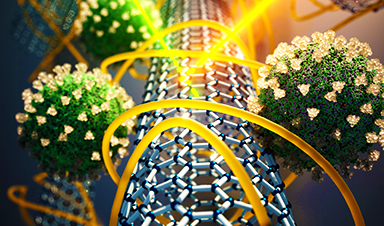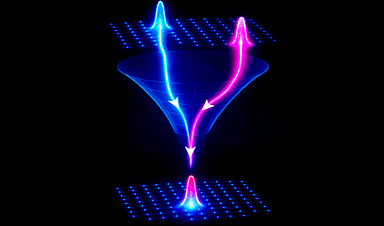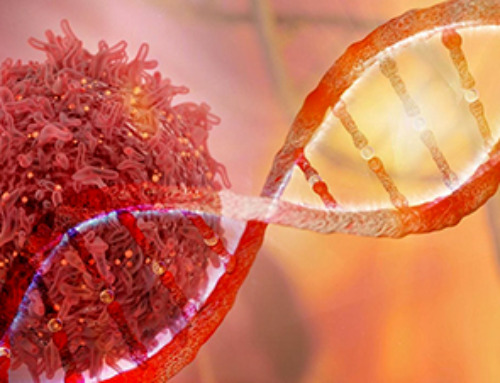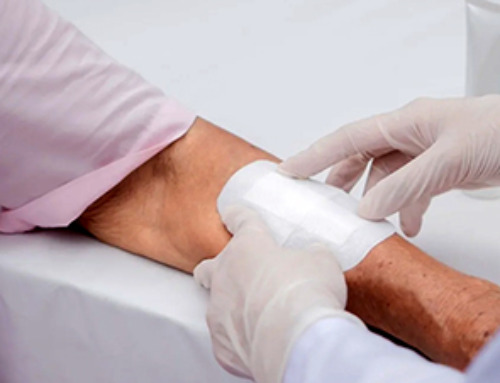| Using specialized carbon nanotubes, MIT engineers have designed a novel sensor that can detect SARS-CoV-2 without any antibodies, giving a result within minutes. Their new sensor is based on technology that can quickly generate rapid and accurate diagnostics, not just for Covid-19 but for future pandemics, the researchers say. | |
| “A rapid test means that you can open up travel much earlier in a future pandemic. You can screen people getting off of an airplane and determine whether they should quarantine or not. You could similarly screen people entering their workplace and so forth,” says Michael Strano, the Carbon P. Dubbs Professor of Chemical Engineering at MIT and the senior author of the study. “We do not yet have technology that can develop and deploy such sensors fast enough to prevent economic loss.” | |
| The diagnostic is based on carbon nanotube sensor technology that Strano’s lab has previously developed. Once the researchers began working on a Covid-19 sensor, it took them just 10 days to identify a modified carbon nanotube capable of selectively detecting the viral proteins they were looking for, and then test it and incorporate it into a working prototype. This approach also eliminates the need for antibodies or other reagents that are time-consuming to generate, purify, and make widely available. | |
| MIT postdoc Sooyeon Cho and graduate student Xiaojia Jin are the lead authors of the paper, which appears in Analytical Chemistry. Other authors include MIT graduate students Sungyun Yang and Jianqiao Cui, and postdoc Xun Gong. | |
Molecular recognition |
|
| Several years ago, Strano’s lab developed a novel approach to designing sensors for a variety of molecules. Their technique relies on carbon nanotubes — hollow, nanometer-thick cylinders made of carbon that naturally fluoresce when exposed to laser light. They have shown that by wrapping such tubes in different polymers, they can create sensors that respond to specific target molecules by chemically recognizing them. | |
| Their approach, known as Corona Phase Molecular Recognition (CoPhMoRe), takes advantage of a phenomenon that occurs when certain types of polymers bind to a nanoparticle. Known as amphiphilic polymers, these molecules have hydrophobic regions that latch onto the tubes like anchors and hydrophilic regions that form a series of loops extending away from the tubes. | |
| Those loops form a layer called a corona surrounding the nanotube. Depending on the arrangement of the loops, different types of target molecules can wedge into the spaces between the loops, and this binding of the target alters the intensity or peak wavelength of fluorescence produced by the carbon nanotube. | |
| Earlier this year, Strano and InnoTech Precision Medicine, a Boston-based diagnostics developer, received a National Institutes of Health grant to create a CoPhMoRe sensor for SARS-CoV-2 proteins. Researchers in Strano’s lab had already developed strategies that allow them to predict which amphiphilic polymers will interact best with a particular target molecule, so they were able to quickly generate a set of 11 strong candidates for SARS-CoV-2. | |
| Within about 10 days of starting the project, the researchers had identified accurate sensors for both the nucleocapsid and the spike protein of the SARS-CoV-2 virus. During that time, they also were able to incorporate the sensors into a prototype device with a fiber optic tip that can detect fluorescence changes of the biofluid sample in real time. This eliminates the need to send the sample to a lab, which is required for the gold-standard PCR diagnostic test for Covid-19. | |
| This device produces a result within about five minutes, and can detect concentrations as low as 2.4 picograms of viral protein per milliliter of sample. In more recent experiments done after this paper was submitted, the researchers have achieved a limit of detection lower than the rapid tests that are now commercially available. | |
| The researchers also showed that the device could detect the SARS-CoV-2 nucleocapsid protein (but not the spike protein) when it was dissolved in saliva. Detecting viral proteins in saliva is usually difficult because saliva contains sticky carbohydrate and digestive enzyme molecules that interfere with protein detection, which is why most Covid-19 diagnostics require nasal swabs. | |
| “This sensor shows the highest range of limit of detection, response time, and saliva compatibility even without any antibody and receptor design,” Cho says. “It is a unique feature of this type of molecular recognition scheme that rapid design and testing is possible, unhindered by the development time and supply chain requirements of a conventional antibody or enzymatic receptor.” |
News
AI Is Overheating. This New Technology Could Be the Fix
Engineers have developed a passive evaporative cooling membrane that dramatically improves heat removal for electronics and data centers Engineers at the University of California San Diego have created an innovative cooling system designed to greatly enhance [...]
New nanomedicine wipes out leukemia in animal study
In a promising advance for cancer treatment, Northwestern University scientists have re-engineered the molecular structure of a common chemotherapy drug, making it dramatically more soluble and effective and less toxic. In the new study, [...]
Mystery Solved: Scientists Find Cause for Unexplained, Deadly Diseases
A study reveals that a protein called RPA is essential for maintaining chromosome stability by stimulating telomerase. New findings from the University of Wisconsin-Madison suggest that problems with a key protein that helps preserve chromosome stability [...]
Nanotech Blocks Infection and Speed Up Chronic Wound Recovery
A new nanotech-based formulation using quercetin and omega-3 fatty acids shows promise in halting bacterial biofilms and boosting skin cell repair. Scientists have developed a nanotechnology-based treatment to fight bacterial biofilms in wound infections. The [...]
Researchers propose five key questions for effective adoption of AI in clinical practice
While Artificial Intelligence (AI) can be a powerful tool that physicians can use to help diagnose their patients and has great potential to improve accuracy, efficiency and patient safety, it has its drawbacks. It [...]
Advancements and clinical translation of intelligent nanodrugs for breast cancer treatment
A comprehensive review in "Biofunct. Mater." meticulously details the most recent advancements and clinical translation of intelligent nanodrugs for breast cancer treatment. This paper presents an exhaustive overview of subtype-specific nanostrategies, the clinical benefits [...]
It’s Not “All in Your Head”: Scientists Develop Revolutionary Blood Test for Chronic Fatigue Syndrome
A 96% accurate blood test for ME/CFS could transform diagnosis and pave the way for future long COVID detection. Researchers from the University of East Anglia and Oxford Biodynamics have created a highly accurate [...]
How Far Can the Body Go? Scientists Find the Ultimate Limit of Human Endurance
Even the most elite endurance athletes can’t outrun biology. A new study finds that humans hit a metabolic ceiling at about 2.5 times their resting energy burn. When ultra-runners take on races that last [...]
World’s Rivers “Overdosing” on Human Antibiotics, Study Finds
Researchers estimate that approximately 8,500 tons of antibiotics enter river systems each year after passing through the human body and wastewater treatment processes. Rivers spanning millions of kilometers across the globe are contaminated with [...]
Yale Scientists Solve a Century-Old Brain Wave Mystery
Yale scientists traced gamma brain waves to thalamus-cortex interactions. The discovery could reveal how brain rhythms shape perception and disease. For more than a century, scientists have observed rhythmic waves of synchronized neuronal activity [...]
Can introducing peanuts early prevent allergies? Real-world data confirms it helps
New evidence from a large U.S. primary care network shows that early peanut introduction, endorsed in 2015 and 2017 guidelines, was followed by a marked decline in clinician-diagnosed peanut and overall food allergies among [...]
Nanoparticle blueprints reveal path to smarter medicines
Lipid nanoparticles (LNPs) are the delivery vehicles of modern medicine, carrying cancer drugs, gene therapies and vaccines into cells. Until recently, many scientists assumed that all LNPs followed more or less the same blueprint, [...]
How nanomedicine and AI are teaming up to tackle neurodegenerative diseases
When I first realized the scale of the challenge posed by neurodegenerative diseases, such as Alzheimer's, Parkinson's disease and amyotrophic lateral sclerosis (ALS), I felt simultaneously humbled and motivated. These disorders are not caused [...]
Self-Organizing Light Could Transform Computing and Communications
USC engineers have demonstrated a new kind of optical device that lets light organize its own route using the principles of thermodynamics. Instead of relying on switches or digital control, the light finds its own [...]
Groundbreaking New Way of Measuring Blood Pressure Could Save Thousands of Lives
A new method that improves the accuracy of interpreting blood pressure measurements taken at the ankle could be vital for individuals who are unable to have their blood pressure measured on the arm. A newly developed [...]
Scientist tackles key roadblock for AI in drug discovery
The drug development pipeline is a costly and lengthy process. Identifying high-quality "hit" compounds—those with high potency, selectivity, and favorable metabolic properties—at the earliest stages is important for reducing cost and accelerating the path [...]





















